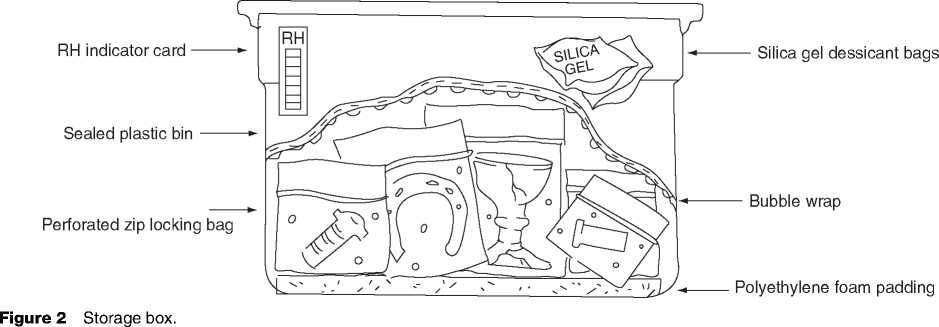Because it is not possible to completely adapt archaeological materials, which have undergone some level of decay, to postexcavation environments, the conservation of archaeological finds continues past treatment. Preventive conservation is the mitigation of deterioration and damage to cultural property through the formulation and implementation of policies and procedures that insure ongoing care and maintenance.
Long-term preservation guidelines for the continuing use and care of archaeological finds involve collaborations with curation and collections management professionals. Various guidelines recommend environmental conditions during storage, transport and exhibition, the selection of appropriate materials for storage, packing, display and transport, and encourage proper procedures for handling during processing and use. For example, details for the design and construction of a support or housing of a fragile artifact and the suggested environmental levels for temperature, humidity, and air filtration that will inhibit material deterioration are part of the conservation for an archaeological object. Cultural property that will be stored in an archaeological repository should be prepared in a manner that is consistent with the conservation standards of that facility.
Good storage for archaeological finds eliminates excess movement between fragmentary pieces, minimizes handling during searches for particular items, and may preserve a reassembled order, or ‘dry-fit’ for the next analyst. Suggested principles for packaging and storage include the following (Figure 2):
1. Recommended environments for archaeological finds suggest desiccating conditions for metals, temperate conditions for dry organic materials such as basketry and textile, and cool conditions for damp or wet objects such as leather or bone. Sealable containers can be kept damp with pads made from wet foam with a biocide or they can be desiccated with silica gel.
2. Zip-locking polyethylene bags may be used for small finds that have stable structures and surfaces.
3. Plastic boxes (including polycarbonate, polystyrene, polyethylene, or polypropylene) or acid-free trays and tissue padding may be used to hold more fragile artifacts and fragments. Materials of different types should be placed in separate containers.
4. Acid-free paper, washed cotton muslin, and acid-free boxes may be used if non-synthetic packaging is required.





 World History
World History









